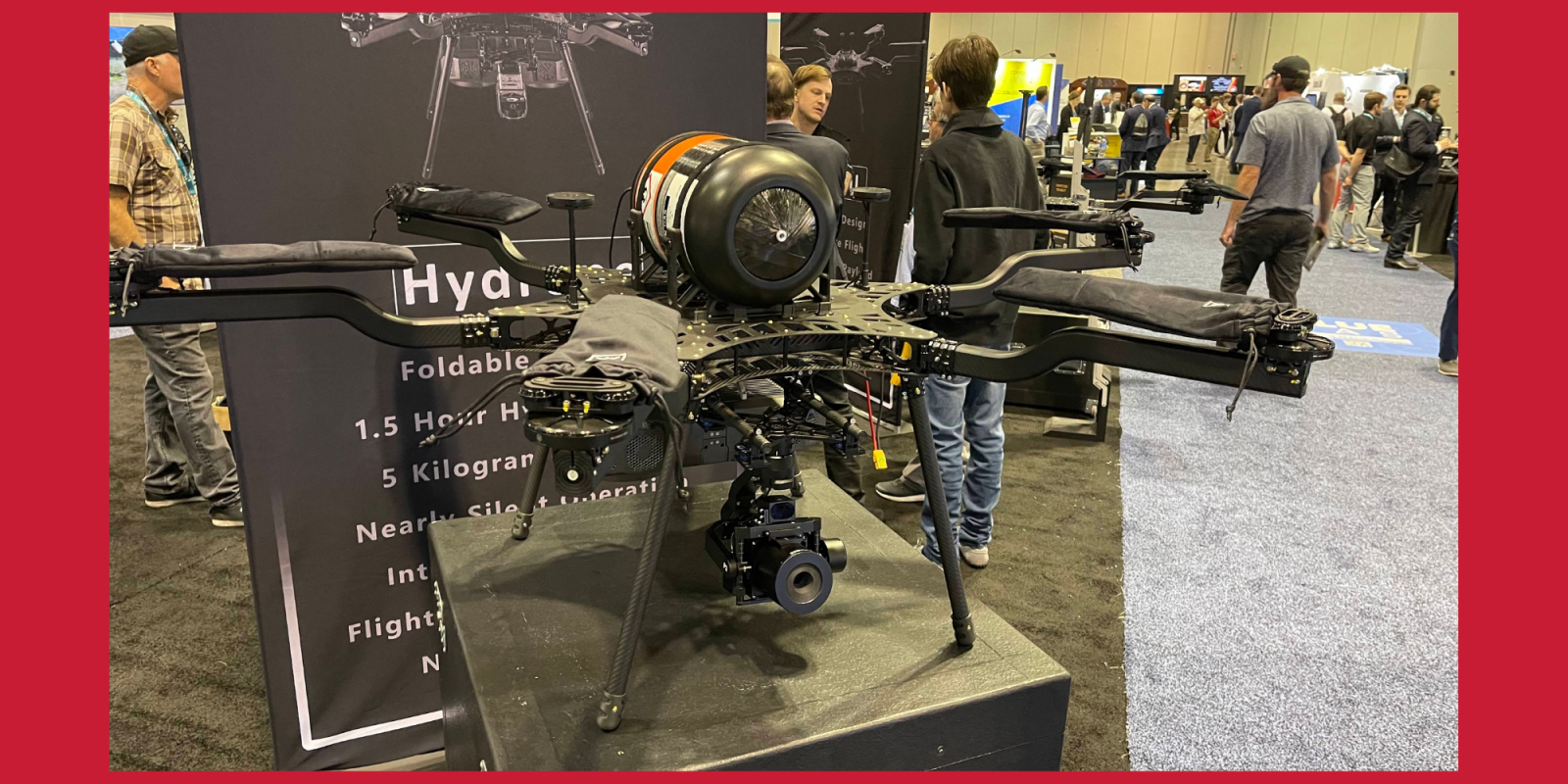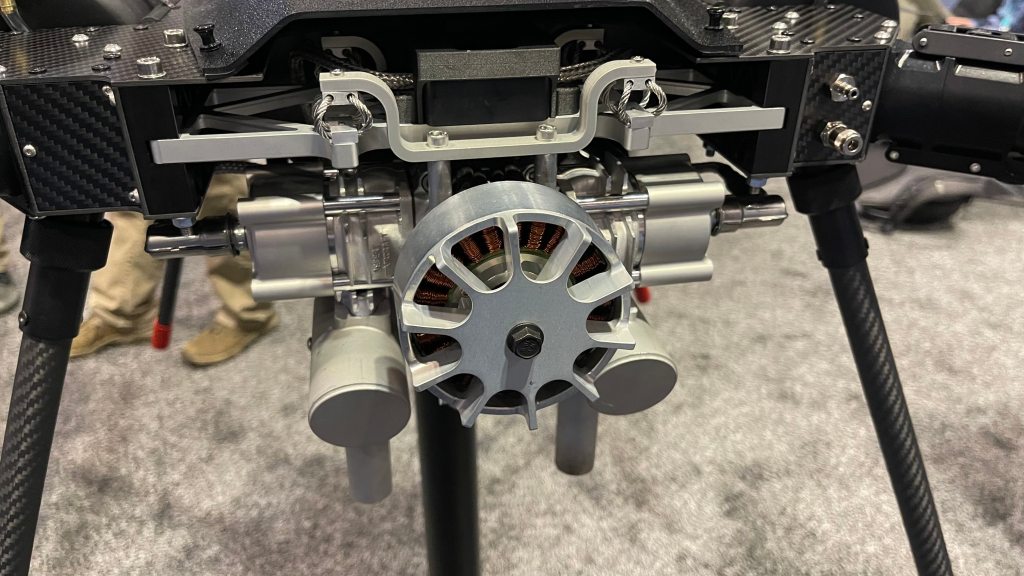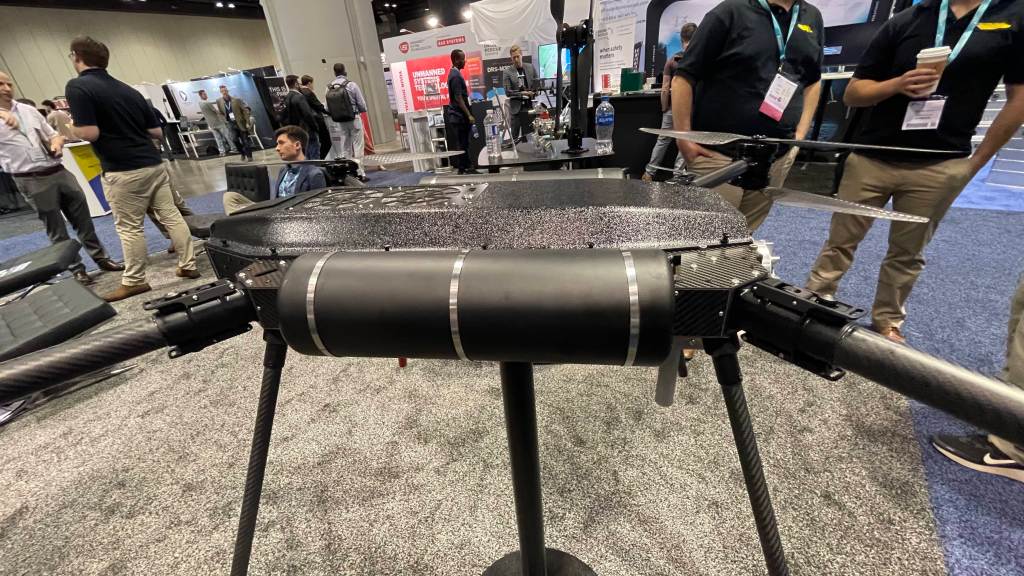
A couple of drones have really caught our eye at the at AUVSI XPONENTIAL conference in Orlando, Florida. They’re hybrids, using hydrogen and gasoline to create electrical energy to run the motors. And there’s a very good reason for that.
We all love our LiPos (except when they get puffy, of course). But there’s a limit to what a LiPo will get you in terms of power. The reason? The energy-to-weight ratio of lithium polymer simply doesn’t compare with other fuel sources. Gasoline and hydrogen are more energy dense, meaning they pack more power to the punch per given weight.
Way more power. And if you’re clever, you can build an engine with a generator or fuel cell that exploits that power and turns it into electricity.
Longer range, higher payloads
That’s really the headline of hybrid drones that convert gasoline or hydrogen into electricity. They can get you a way longer trip than LiPos.
The first drone we’ll take a look at comes from Harris Aerial, based in Florida. One of the company’s drones, the H6 hybrid, is already on the vaunted Blue sUAS List – drones selected by the federal Defense Innovation Unit. These are seen as “approved” because they’ve passed vetting for cybersecurity and do not incorporate certain Chinese-made components, which are forbidden in the National Defense Act.
Here it is, complete with that hydrogen cylinder on the top:

You can sort of see some specs behind the drone. But the Hydrone touts:
- Foldable design
- 1.5 hour Hybrid flight
- Five kilogram payload
- Nearly silent operation
- Integrated ADS-B
- NDAA Compliant
“You fill that top cylinder with hydrogen, it feeds into the fuel cell and magic happens,” says Jarrett Robinson, Sales and Integrations with Harris Aerial. And that magic? Well, the price reflects the cost of fuel cell technology: The drone is $87,500.
“We’ve sold quite a few of them,” says Harris. “It’s been out about a year.”
News from Freefly
Freefly was celebrating. Its Alta X recently made it onto the Defense Innovation Unit’s Blue sUAS list, meaning its considered an approved drone suitable for military and federal agency purchases. Its Astro drone is also in the queue for Blue sUAS approval.
And that makes Freefly CTO Max Tubman a happy man; opening the Blue sUAS door can lead to a lot of sales.
“It’s a big boon, yes,” says Tubman. “There are certain federal agencies that have just been waiting to replace fleets of aircraft, so it will unlock at lot for them.”

Wait, there’s more!
Freefly also had an intriguing product on the floor: A gas-electric hybrid Freefly has been developing with Canadian company Pegasus Aerospace. The gasoline (regular, or multi-fuel), runs a highly efficient two-stroke motor that in turn produces electricity.
“The intention is that we take gasoline and use that as an energy storage method, which we can then transform into electricity,” says Matt McRoberts, Pegasus Founder and CEO.
As a consequence of gasoline having 40-50 times the gravimetric density as LiPo batteries, these types of systems can stay in the air much longer, up to eight to 12 times as long, depending on the application. Realistically that’s not even the most important thing we’ve learned…using them up in northern Ontario with no access to electricity, having to haul batteries out into the field is basically a non-starter for a lot of these applications. The ability to refuel a UAV and put it in the air and have it do useful work is important.
Matt McRoberts, CEO Pegasus Aerospace
And here’s a look at this bird, plus its power plant.



DroneDJ’s Take
There are a lot of applications for hybrid drones: Deliveries, surveillance, disaster relief – anything that requires long flights for data acquisitions or larger payloads. We like the look of this Hybrid Hawk and can see the convenience in remote communities of simply carrying fuel rather than a truckload of batteries. We wish Freefly and Pegasus the best of success with this unit.
FTC: We use income earning auto affiliate links. More.





Comments